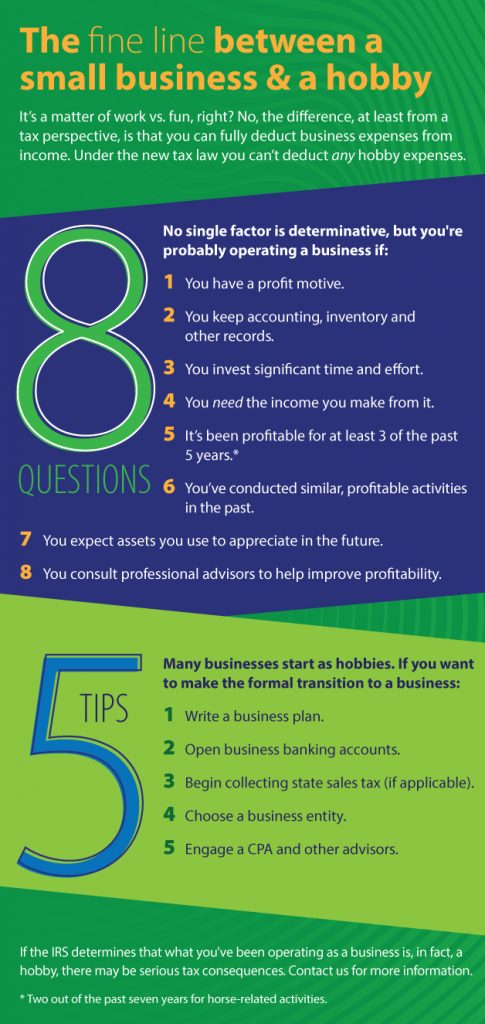It’s not uncommon for businesses to sometimes generate tax losses. But the losses that can be deducted are limited by tax law in some situations. The Tax Cuts and Jobs Act (TCJA) further restricts the amount of losses that sole proprietors, partners, S corporation shareholders and, typically, limited liability company (LLC) members can currently deduct — beginning in 2018. This could negatively impact owners of start-ups and businesses facing adverse conditions.
Before the TCJA
Under pre-TCJA law, an individual taxpayer’s business losses could usually be fully deducted in the tax year when they arose unless:
- The passive activity loss (PAL) rules or some other provision of tax law limited that favorable outcome, or
- The business loss was so large that it exceeded taxable income from other sources, creating a net operating loss (NOL).
After the TCJA
The TCJA temporarily changes the rules for deducting an individual taxpayer’s business losses. If your pass-through business generates a tax loss for a tax year beginning in 2018 through 2025, you can’t deduct an “excess business loss” in the current year. An excess business loss is the excess of your aggregate business deductions for the tax year over the sum of:
- Your aggregate business income and gains for the tax year, and
- $250,000 ($500,000 if you’re a married taxpayer filing jointly).
The excess business loss is carried over to the following tax year and can be deducted under the rules for NOLs.
For business losses passed through to individuals from S corporations, partnerships and LLCs treated as partnerships for tax purposes, the new excess business loss limitation rules apply at the ownerlevel. In other words, each owner’s allocable share of business income, gain, deduction or loss is passed through to the owner and reported on the owner’s personal federal income tax return for the owner’s tax year that includes the end of the entity’s tax year.
Keep in mind that the new loss limitation rules apply after applying the PAL rules. So, if the PAL rules disallow your business or rental activity loss, you don’t get to the new loss limitation rules.
Expecting a business loss?
The rationale underlying the new loss limitation rules is to restrict the ability of individual taxpayers to use current-year business losses to offset income from other sources, such as salary, self-employment income, interest, dividends and capital gains.
The practical impact is that your allowable current-year business losses can’t offset more than $250,000 of income from such other sources (or more than $500,000 for joint filers). The requirement that excess business losses be carried forward as an NOL forces you to wait at least one year to get any tax benefit from those excess losses.
If you’re expecting your business to generate a tax loss in 2018, contact us to determine whether you’ll be affected by the new loss limitation rules. We can also provide more information about the PAL and NOL rules.


